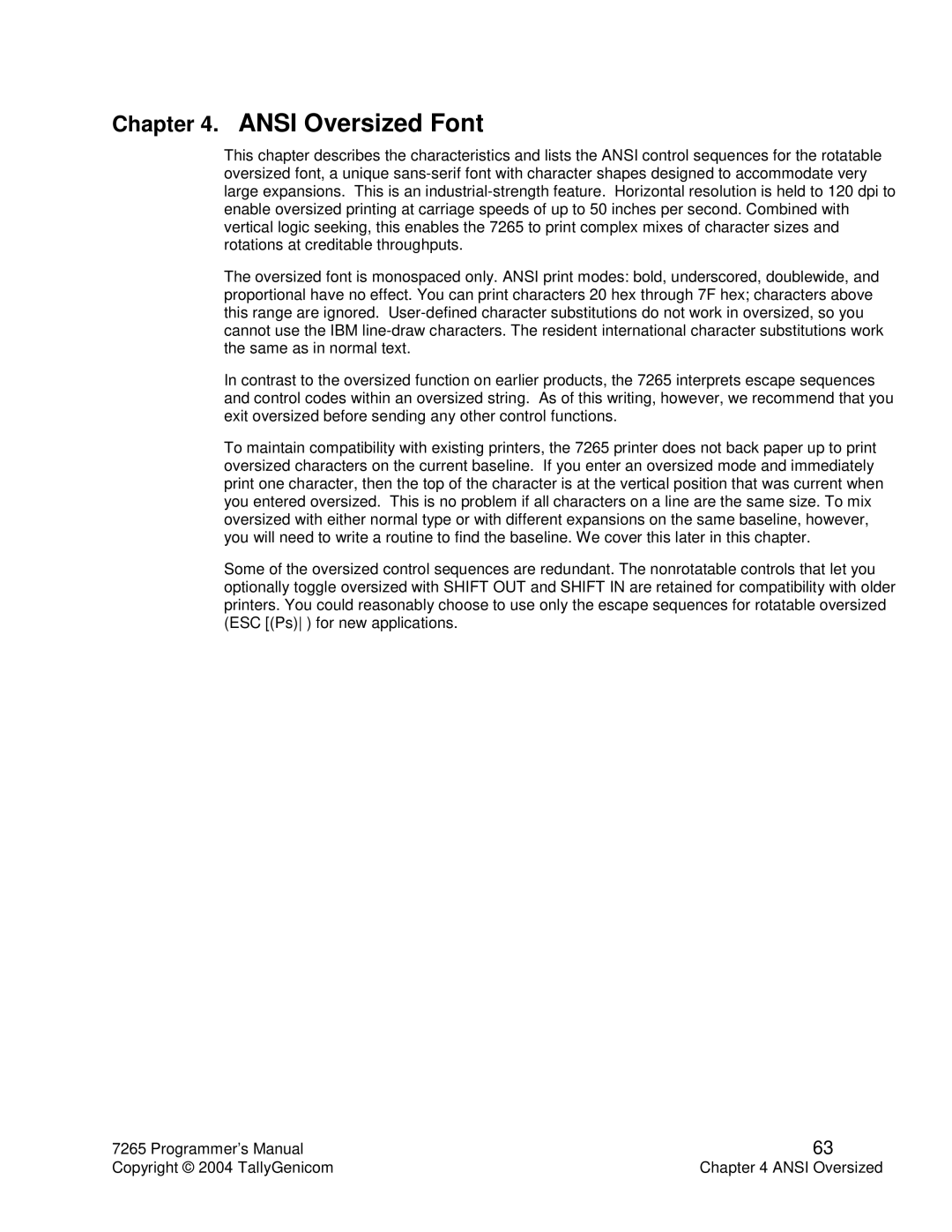Chapter 4. ANSI Oversized Font
This chapter describes the characteristics and lists the ANSI control sequences for the rotatable oversized font, a unique
The oversized font is monospaced only. ANSI print modes: bold, underscored, doublewide, and proportional have no effect. You can print characters 20 hex through 7F hex; characters above this range are ignored.
In contrast to the oversized function on earlier products, the 7265 interprets escape sequences and control codes within an oversized string. As of this writing, however, we recommend that you exit oversized before sending any other control functions.
To maintain compatibility with existing printers, the 7265 printer does not back paper up to print oversized characters on the current baseline. If you enter an oversized mode and immediately print one character, then the top of the character is at the vertical position that was current when you entered oversized. This is no problem if all characters on a line are the same size. To mix oversized with either normal type or with different expansions on the same baseline, however, you will need to write a routine to find the baseline. We cover this later in this chapter.
Some of the oversized control sequences are redundant. The nonrotatable controls that let you optionally toggle oversized with SHIFT OUT and SHIFT IN are retained for compatibility with older printers. You could reasonably choose to use only the escape sequences for rotatable oversized (ESC [(Ps) ) for new applications.
7265 Programmer’s Manual | 63 |
Copyright © 2004 TallyGenicom | Chapter 4 ANSI Oversized |
